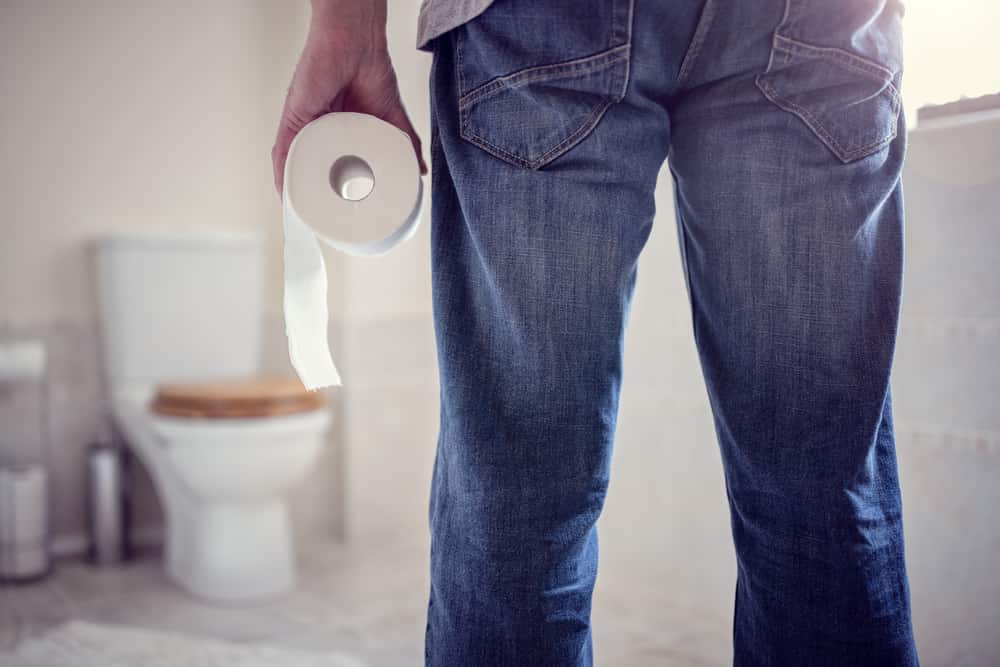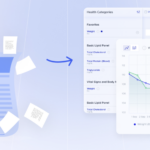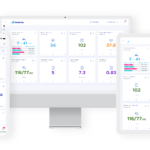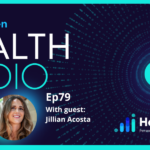Heads Up Health allows you to track the Bristol Stool Chart to help you identify problematic foods, supplements, digestive health and other lifestyle stressors. While it may seem foreign or unusual to examine what comes out of your body, it’s pretty important for improving or maintaining your health. The amount of time your food travels through your body can give you clues as to whether or not the fuel you’re putting into it is best serving you and if you’re able to digest and assimilate it well.
To start tracking your Bristol score now alongside all of your other vital health metrics, click the button below to create your account. Or, read on to learn more about how to use the Bristol stool chart on your path to optimal health.
Bristol stool chart – basics
Did you know that what comes out of your body is just as important as what goes into it? As awkward as it may be to talk about poop in descriptive terms to your health care practitioner, it really does tell them a lot about your digestive system and how your body is handling the food you’re putting into it.
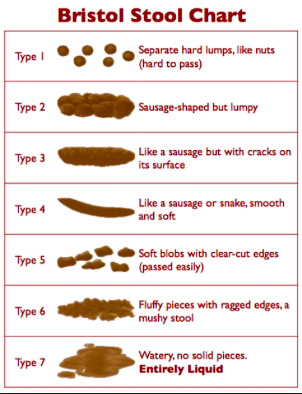
Fortunately Dr. Ken Heaton, MD from The University of Bristol created The Bristol Stool Chart in 1997, through a study where they measured the transit time of their food from entrance to exit with radiopaque pellets, and had them keep a diary of their stool using this scale. Upon completion of the trial, the Bristol Stool Chart was born as a universal way to track transit time. The chart can be used to help identify gastrointestinal distress or food sensitivities even.
What Do The Types Mean?
Types 1 and 2 are less than ideal. They indicate stool that has been in the colon for a longer period of time. This will present as constipation, where the stool is drier, harder and lumpier. These bowel movements are often more than 1 day apart, and can be difficult to move out of the body. Evacuation can feel incomplete, like you cannot pass any more stool, however there is still a feeling of fullness in the rectum that you cannot pass without difficulty. If seen consistently, this could warrant further investigation by your healthcare practitioner, especially if combined with other symptoms.
Common Physical Possibilities: Lack of fat, fiber or water in the diet.
Common Emotional Possibilities: Stress, fear, anxiety, travel (often people find it difficult to have regular bowel movements while away from home).
Common Medication Possibilities: Pain relievers, NSAIDS, antibiotics, antidepressants, anti-diarrheal, iron, calcium, and more. If you’re taking a medication, or supplement check the side effects to see if this could be the cause of this type of bowel movement.
Types 3 and 4 are ideal. This stool moves easily through the digestive tract and is eliminated without difficulty. Minimal effort is required and there is minimal toilet paper required. These do not cause pain or difficulty upon elimination.
Steps to take to see more of this type of stool: Adequate hydration, electrolytes, exercise, balanced diet with plenty of vegetables for fiber, adequate fat, regular intake of probiotics or probiotic rich foods, especially after antibiotic therapy. Make sure to take time to rest, relax and manage stress.
Types 5, 6, & 7 are also less than ideal. These represent food that has moved too quickly through the digestive tract. This type of stool can create an urgency to get to the bathroom as quickly as possible. Possible irritants can include viruses, parasites, bacteria, food illnesses, medications or supplements, sensitivities to common foods, or just even overdoing it with a single food. These can result in 5-6 or more bowel movements in a day. If seen consistently, this could warrant further investigation by your healthcare practitioner, especially if combined with other symptoms.
Common Physical Possibilities: Overtraining, food reactions, bacteria, virus, food poisoning
Common Emotional Possibilities: These can be the same or similar to the other end of the Bristol chart; Stress, fear, worry, anxiety
Common Medication Possibilities: Antibiotics, antiacids, antidepressants, chemotherapy meds are some of the most common. If you’re taking a medication, or supplement check the side effects to see if this could be the cause of this type of bowel movement.
The Ideal Bowel Movement
An ideal bowel movement is one where you feel the urge to poop, but if you weren’t near a restroom you could wait a while longer (though not ideal, your body could handle this), you sit down, and with little effort produce a #3 or #4 bowel movement 6-8 inches in length and snake like. There should be no ribboning or breaks in the poop, when you wipe you should see nothing on the toilet paper. That is the ideal poop. You should have 2-3 of these daily, usually after your meals. Use the Bristol Stool Chart to help guide you toward more 3’s and 4’s in your daily average.
Tracking with Heads Up Health
Many Functional Medicine practitioners and other health experts who understand the connection between bowel movement and digestive health will ask their patients to track their Bristol score. This provides valuable feedback to the practitioner on how the patient’s digestive health is trending and how they are reacting to different meals. Tracking your Bristol score can also help you correlate digestion with other aspects of our lifestyle such as stress and sleep.
On an average basis, it’s hard to remember what we have for lunch, much less what we pooped that day! Thankfully HeadsUpHealth has added this feature so you don’t have to have an awkward discussion with your significant other about why you have a “poop log” detailing your bowel movements on a daily basis.
Making a note in the quick entry field of your most recent meal, can be helpful in tracking down any food sensitivities that may be associated with your foods, medications, and supplements you take.

Tracking this info in Heads Up makes it easier to share with your health expert and allows digestion to be easily compared to other relevant health metrics, such as fiber intake and even blood sugar readings. New research is showing a strong connection between our gut health and our blood sugar responses after eating and as we improve the health of our gut microbiome, our post-meal blood sugar responses often improve as well.

While type 3 & 4 are the ideal stool, everyone will have changes, even with the best diet and nutrition, due to various colds, exposures, etc., but if you’ve been tracking your bowel movements, then you’ll know when a one off symptom becomes something more chronic and can talk with your health care professional about what could be causing the changes. Making notes with regards to anything you can recall proceeding the changes will help you to identify potential problems and find a course of direction that will keep your health moving upward.
Summary
The Bristol stool chart can be a helpful tool as you work to improve your digestive health, identify food sensitivities and improve your gut microbiome. Heads Up allows you to track the Bristol score alongside other vital health metrics so you can find your own correlations and share your data with your health practitioner of choice. To get started, sign up for your free trial using the button below.
Disclaimer- The content in this post is not intended to be a substitute for professional medical advice, diagnosis, or treatment. Always seek the advice of your physician or other qualified health provider with any questions you may have regarding a medical condition. Never disregard professional medical advice or delay in seeking it because of something you have read in this post.
